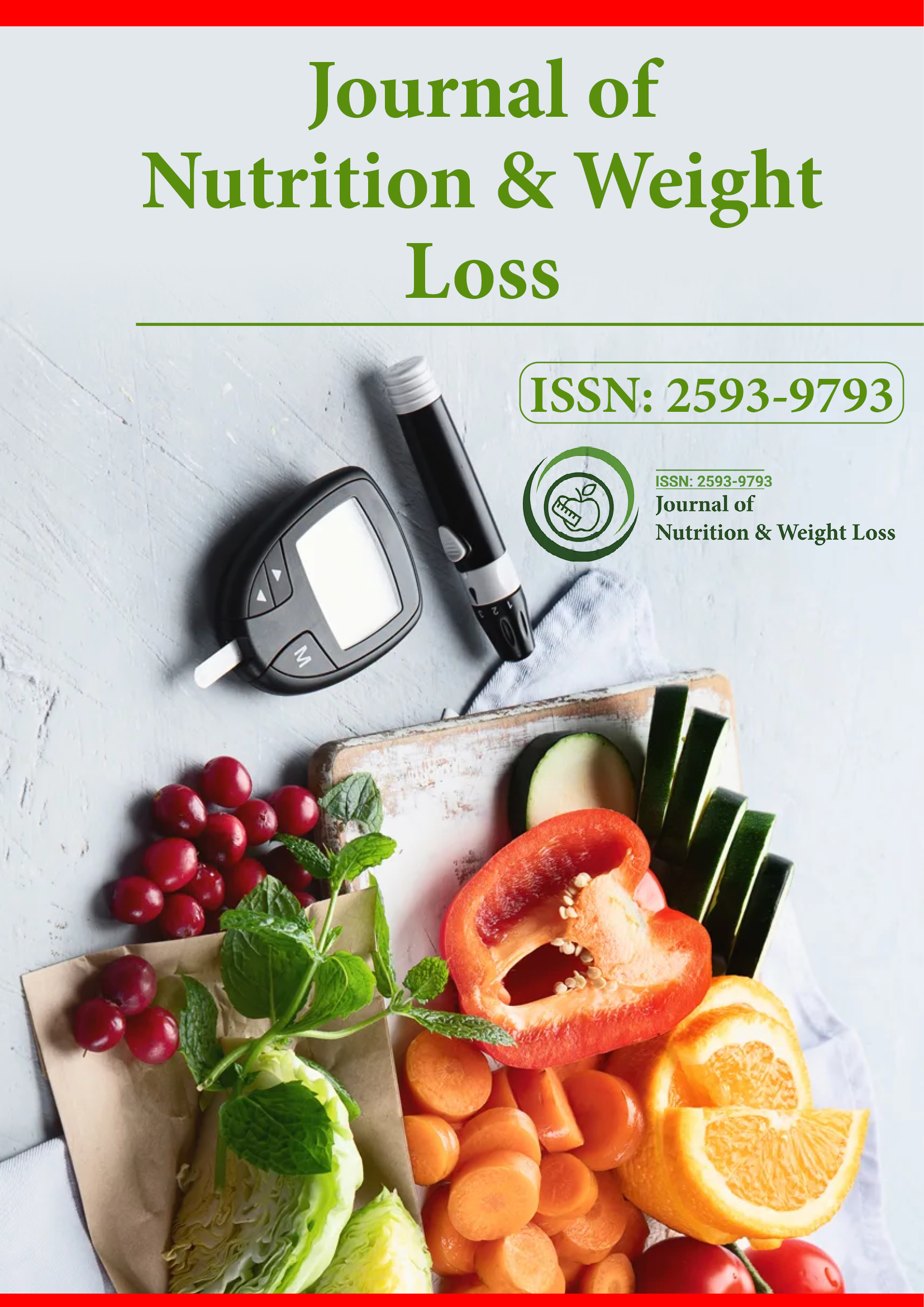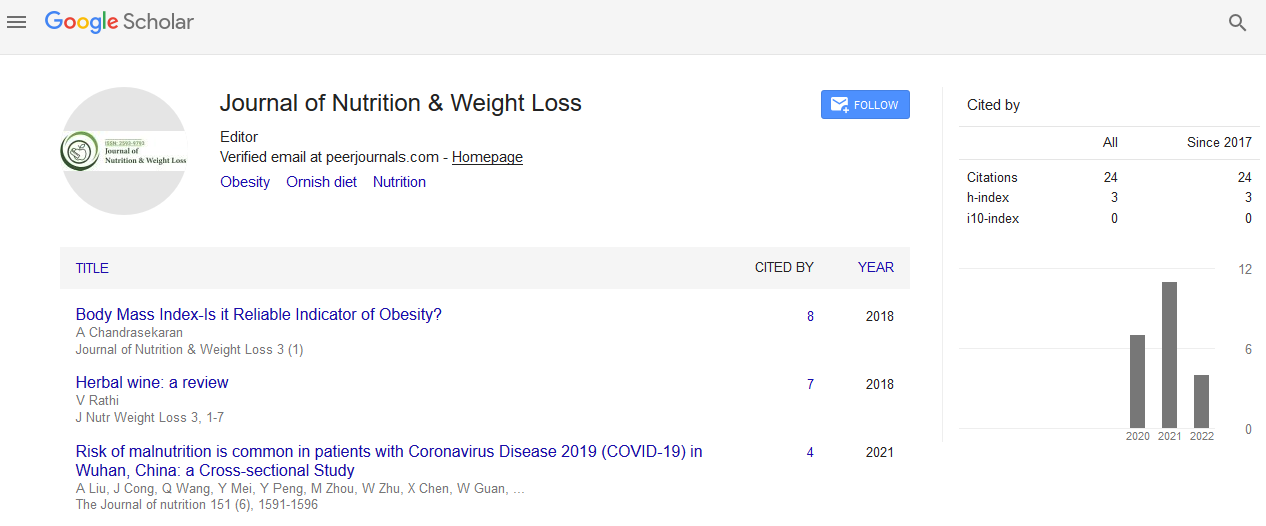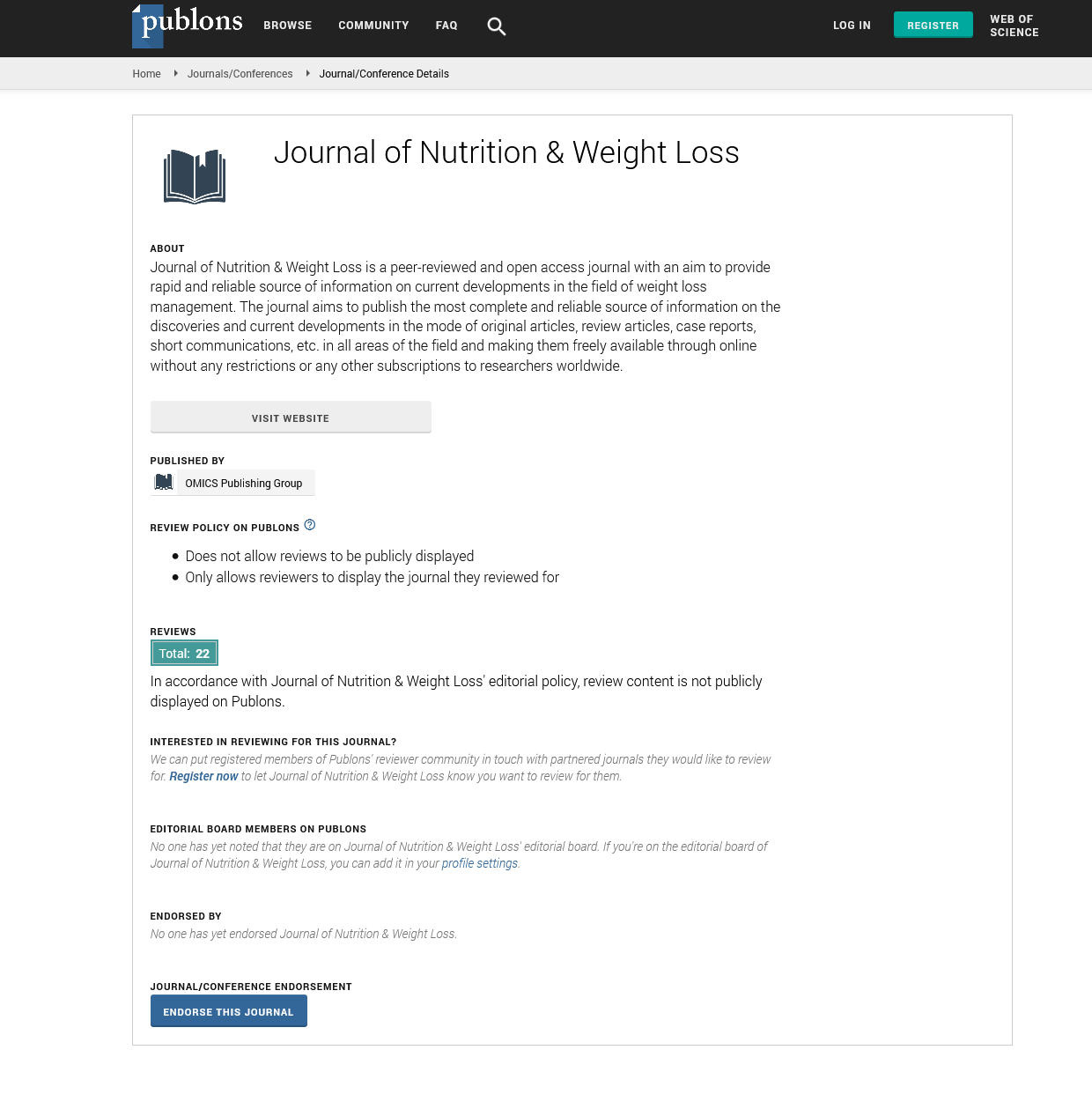Indexed In
- RefSeek
- Hamdard University
- EBSCO A-Z
- Publons
- Euro Pub
- Google Scholar
Useful Links
Share This Page
Journal Flyer

Open Access Journals
- Agri and Aquaculture
- Biochemistry
- Bioinformatics & Systems Biology
- Business & Management
- Chemistry
- Clinical Sciences
- Engineering
- Food & Nutrition
- General Science
- Genetics & Molecular Biology
- Immunology & Microbiology
- Medical Sciences
- Neuroscience & Psychology
- Nursing & Health Care
- Pharmaceutical Sciences
Opinion Article - (2024) Volume 9, Issue 1
Sustainable Weight Loss: The Role of Balanced Eating
Hala Martin*Received: 02-Mar-2024, Manuscript No. JNWL-24-26383; Editor assigned: 05-Mar-2024, Pre QC No. JNWL-24-26383 (PQ); Reviewed: 21-Mar-2024, QC No. JNWL-24-26383; Revised: 27-Mar-2024, Manuscript No. JNWL-24-26383 (R); Published: 05-Apr-2024, DOI: 10.35248/2593-9793.24.9.201
Description
Balanced eating, which includes portion control and deliberate meal planning, is essential for long-term weight loss. This approach places more emphasis on nutrient-dense meals, sensible portion sizes, and mindful eating practices than it does on restrictive diets. A combination of proteins, carbs, fats, and fiber is included in a balanced diet to make sure the body gets the nutrients it needs. Positive behavioral improvements and consistent physical activity are also encouraged. By promoting long-term health and acknowledging individual variances, this all-encompassing approach increases the sustainability and attainable nature of weight management. People can attain long-lasting weight loss outcomes and enhance their general wellbeing by implementing a balanced diet.
Maintaining good health and reaching a balanced weight has become very difficult for many people in today's world. Obesity and related health issues are on the rise globally due to the spread of unhealthy habits and readily accessible processed meals. In an effort to buck this trend, an increasing number of people are now looking for a complete strategy that will help them not only shed excess weight but also create a nourishing and sustainable lifestyle that enhances their general well-being. Achieving a healthy weight requires taking into account a variety of factors and using a complete approach, such as balanced eating, regular physical activity, and positive behavior change, rather than relying on band-aid fixes and restrictive diets. This method acknowledges that each person's path to improved health is distinct and necessitates consideration of psychological, emotional, and physical factors.
Meticulous portion control is essential to maintaining a well balanced diet and reaching weight loss objectives. It's important to consider both the quantity and the composition of their meals. Even excessive in healthful foods can lead to unintended weight gain and other health issues. Thus, understanding and putting portion control into practice has the potential to completely transform their quest for improved health. Studies have demonstrated the benefits of portion control plates, which can raise people of all ages' understanding of nutrition. These clever tools work well for choosing the right portion sizes, whether they are presented as two- or three-dimensional plates. By providing a picture of a well-balanced meal, they help people comprehend how much of each food group is appropriate.
Another important factor in portion control is packaging. It can slightly assist customers in selecting healthier options, such as lowering serving sizes. Unfortunately, because judgments about what to buy for meals are usually made automatically, these aspects are frequently ignored. As a result, it's important to examine packaging carefully and interpret the useful information it provides regarding serving sizes. Portion control tools, such smaller dinnerware and cutlery, offer chances to manage serving quantities. Their efficacy is still up for discussion, though. According to several research, these techniques are useful for weight loss programs. Through promoting increased consciousness of serving sizes, they enable people to make knowledgeable choices about their eating patterns.
The majority of nutritionists and exercise instructors advise choosing portions that are both balanced and suitable for the demands of the individual. A normal serving size, for example, would consist of 1/2 cup cooked rice or pasta, 1-2 cups salad and vegetables, and 3 cups non-fat or low fat dairy products. For this group of people, strict yet uncomplicated restrictions about portion sizes can result in notable waist circumference decreases. This demonstrates that portion management has advantages for a wide range of people, not just those who are trying to lose weight.
However, it's significant to recognize that not everyone will benefit from portion control. Because every person has a different body, what might be helpful for one person may not be effective for another. A person's daily calorie requirements and expenditure may be influenced by factors like age, gender, activity level, and metabolic rate. For this reason, consulting a medical practitioner or a trained dietitian before starting a portion-control diet.
Citation: Martin H (2024) Sustainable Weight Loss: The Role of Balanced Eating. J Nutr Weight Loss. 9:201.
Copyright: © 2024 Martin H. This is an open access article distributed under the terms of the Creative Commons Attribution License, which permits unrestricted use, distribution, and reproduction in any medium, provided the original author and source are credited.


